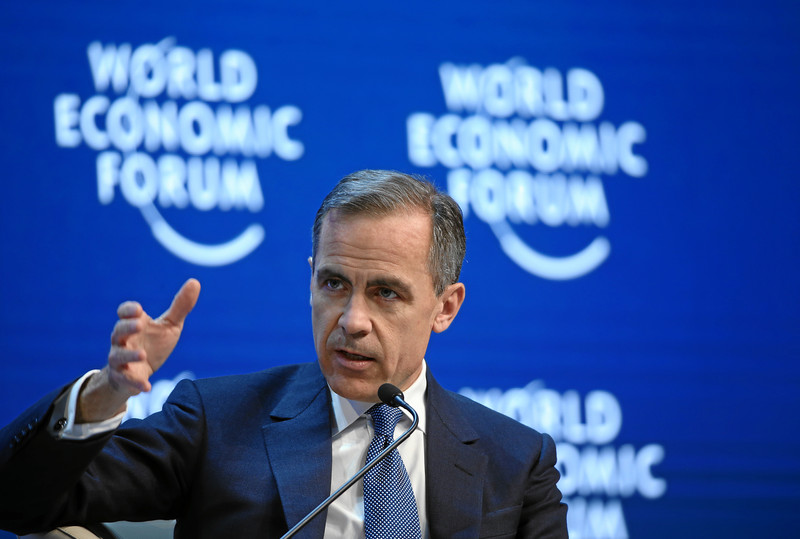Business
U.S., China agree to 90-day tariff reduction after negotiations

 MxM News
MxM News
Quick Hit:
The United States and China have agreed to reduce tariffs for 90 days following trade negotiations in Geneva, offering temporary relief to global markets. The deal marks a pause in the escalating economic conflict, with both countries pledging to resume talks during the truce.
Key Details:
- The U.S. will lower tariffs on Chinese imports from April levels by 24 percentage points, maintaining a 10% base rate.
- China will implement a matching reduction and suspend additional non-tariff measures targeting American goods.
- S&P 500 futures jumped 3%, while U.S. bond yields climbed as investors reacted to signs of de-escalation.
🚨 Treasury Secretary @SecScottBessent announces a major trade deal with China:
“We have reached an agreement on a 90-day pause and substantially move down the tariff levels. Both sides on the reciprocal tariffs will move their tariffs down 115%.” pic.twitter.com/d89RFR3jA4
— Trump War Room (@TrumpWarRoom) May 12, 2025
Diving Deeper:
After weeks of mounting economic tension, the United States and China on Monday jointly announced a 90-day reduction in tariffs, signaling a temporary easing of the trade war that has unnerved businesses, investors, and policymakers across the globe.
The agreement, reached during weekend negotiations in Geneva, was confirmed by U.S. Treasury Secretary Scott Bessent. “We had very robust discussions. Both sides showed great respect to what was a very positive process,” Bessent said in remarks to reporters. According to Bessent, the U.S. will lower its tariffs to 30%, while China will cut its rates to 10% during this period—a proportional rollback from their respective April highs.
The White House clarified that the reduction affects tariffs announced by President Trump on April 2, cutting them by 24 percentage points while keeping the base ad valorem rate of 10%. In response, Beijing agreed not only to match the tariff rollback but also to lift administrative barriers and non-tariff measures it had imposed since April.
Both countries are expected to implement the agreed measures by Wednesday. The joint statement released following the talks indicated that discussions will continue over the coming months as the two sides explore a longer-term resolution.
Markets reacted quickly and positively. S&P 500 futures surged over 3% on the news, providing a shot of optimism after weeks of uncertainty. The U.S. Dollar Index, which had been under pressure due to investor anxiety about America’s trade posture, rose more than 1%. Meanwhile, bond markets adjusted sharply, with the yield on the 10-year Treasury climbing to 4.445%, its highest point since early April.
While the 90-day pause offers breathing room, the underlying issues remain unresolved. Businesses that had delayed orders due to tariff costs may now rush to restock, a move that could cause short-term volatility or even a demand shock in some sectors. Economists warn that without a longer-term agreement, the reprieve may prove fleeting.
For now, though, the breakthrough offers a glimmer of hope. It’s a notable win for President Trump’s strategy of tough negotiations, underscoring his administration’s commitment to putting American interests first while forcing adversaries to the table. The outcome stands in stark contrast to the previous administration’s conciliatory tone and may reinforce the argument for a more assertive U.S. economic posture on the world stage.
Business
World Economic Forum Aims to Repair Relations with Schwab

The whistleblower has always been anonymous, and it remains very suspicious that the very organization he created would turn on him after receiving an anonymous letter that they admitted may not have been credible.
World Economic Forum founder Klaus Schwab stepped down from his chairman position at the organization on April 20, 2025, amid accusations of fraud. Our computer had forecast that the WEF would enter a declining trend with the 2024 ECM turning point. This staged coup happened about 37 years after the first Davos meeting (8.6 x 4.3). From our model’s perspective, this was right on time. Now, Schwab and the WEF are working to repair ties.
An anonymous whistleblower claimed that Klaus Schwab and his wife collaborated with USAID to steal tens of millions in funding. The whistleblower has always been anonymous, and it remains very suspicious that the very organization he created would turn on him after receiving an anonymous letter that they admitted may not have been credible. Something like this would never be acceptable in any court of law, especially if it’s anonymous. It would be the worst or the worst hearsay, where you cannot even point to who made the allegation.
Back in April, the WEF said its board unanimously supported the decision to initiate an independent investigation “following a whistleblower letter containing allegations against former Chairman Klaus Schwab. This decision was made after consultation with external legal counsel.”
Now, the WEF is attempting to repair its relationship with its founder ahead of the next Davos meeting. Bloomberg reported that the WEF would like to “normalize their relationship [with Klaus Schwab] in order to safeguard the forum and the legacy of the founder.”
Peter Brabeck-Letmathe has replaced Schwab for the time being, but is less of a commanding force. Schwab’s sudden departure has caused instability in the organization and its ongoing mission. Board members are concerned that support for the organization will begin to decline as this situation remains unresolved.
The World Economic Forum’s annual revenue in 2024 was 440 million francs ($543 million), with the majority of proceeds coming from member companies and fees. Yet, the number of people registered to attend the 2025 Davos event is on par if not slightly exceeding the number of participants from the year prior.
Schwab’s departure has damaged the Davos brand. There is a possibility that the organization is attempted to rebrand after Agenda 2030 failed. The WEF attempted to move away from its zero tolerance stance on ESG initiatives after they became widely unpopular among the big industry players and shifting governments. The brand has attempted to integrate the importance of digital transformation and AI to remain relevant as the tech gurus grow in power and popularity. Those who are familiar with Klaus Schwab know the phrase, “You will own nothing and be happy.” These words have been widely unpopular and caused a type of sinister chaos to surround the brand that was once respected as the high-brow institution of globalist elites.
European Central Bank President Christine Lagarde was slated to replace Schwab in 2027 when her term ends, and all reports claimed that he was prepared to remain in the chairman role for an additional two years to ensure Lagarde could take his place. What changed seemingly overnight that would cause the organization to discard Schwab before he was due to retire?
Schwab denies any misconduct and filed lawsuits against the whistleblowers, calling the accusations “calumnious” and “unfounded.” He believes “character assassination” was the premise of the claims.
I am no fan of Klaus Schwab, as everyone knows. I disagree with his theories from start to finish. Nevertheless, something doesn’t smell right here. This appears to be an internal coup, perhaps to distract attention from the question of alleged funds for the WEF from USAID, or to try to salvage the failed Agenda 2030. Perhaps they will claim that no misconduct had occurred since DOGE did not raise concerns or there is a possibility that those behind the internal coup are concerned that Schwab’s counter lawsuit could uncover new corruption. The investigation into Schwab has not concluded, but after only three months, the WEF would like to wrap it up. It appears that the WEF does not want to welcome Schwab back; rather, they would like to ensure an amicable resolution to maintain both the brand’s reputation as well as the founder’s.
Business
Behind the latest CPI Numbers: Inflation Slows, But Living Costs Don’t

Behind the 1.7% headline, falling gas prices mask deeper affordability issues—from rising rents and mortgage costs to inflated essentials still burdening working Canadians.
Canada’s latest Consumer Price Index (CPI) report dropped this week, and if you believe the headlines, things are looking up. The Trudeau government is gone, Mark Carney is in charge, and the narrative from the media-industrial complex is that inflation is under control. The truth, however, is far more complicated—and much uglier.
Let’s break it down.
The Good
Let’s start with the headline everyone’s pretending is a victory: inflation is at 1.7%. That’s the lowest in recent memory. Great, right? Well, before we throw a parade for Mark Carney and the ghost of Justin Trudeau, let’s be honest about why that number dropped.
It’s because they killed the carbon tax. That’s it. The federal consumer carbon levy—gone as of April 1st—took a sledgehammer to gasoline prices. Down 15.5% year-over-year. That’s not Liberal brilliance; that’s what happens when you stop punishing working people for heating their homes and driving to their jobs. It’s the most obvious economic lesson in the world—and it took a political collapse to learn it.
And sure, some other costs went down too. Airfare, travel tours, natural gas—all dipping. But let’s be honest here: how many average Canadians are flying to tropical resorts right now? Those declines are meaningless unless you’re upper-middle class or live in a city with piped-in gas. For most people, this isn’t relief—it’s background noise.
So yes, things look “better” on paper. But that’s only because Ottawa stopped making them actively worse. Don’t confuse less harm with actual help.
The Bad
Now, if you strip away the smoke and mirrors—take out gas and energy, the very components that dropped because the Liberals stopped interfering—you’ll find core inflation is still sitting at 2.7%. That’s above the Bank of Canada’s target. So while they’re bragging about a “cooling economy,” everything that actually matters to working people is still getting more expensive.
Start with rent—up 4.5% nationwide. And in Ontario, where they’re spinning it as a “slowdown,” it’s still climbing at 3%. Let’s be blunt: this is the Trudeau housing crisis in full bloom. Years of unchecked immigration, foreign investment, and anti-building regulations have created a market where young Canadians can’t dream of buying, and now can’t even afford to rent. This isn’t stability—it’s metastasis.
And then there’s food. Up 3.4% year-over-year. That’s every single trip to the grocery store hitting harder. Why? Because for years, this government pumped the economy full of cheap cash, shut down critical supply chains, and slapped on regulation after regulation—then acted shocked when bread and eggs cost more than your phone bill.
So no, the bad news didn’t disappear. It’s just buried under a layer of statistical gaslighting.
The Ugly
This is where the mask really slips.
Let’s start with mortgage interest—up 6.2% year-over-year. That’s the 21st consecutive month of rising costs for homeowners. Why? Because the Carney–Trudeau economic cartel raised rates into the stratosphere to fix the very inflation they helped ignite. Now the middle class is getting crushed under monthly payments they can’t afford, and the Liberal elite shrugs, sipping Chardonnay in their fully paid-off Ottawa brownstones.
But it doesn’t stop there.
Telephone services shot up 7.2% in just one month. Remember when Trudeau promised affordable internet and more competition in telecom? Yeah—didn’t happen. Instead, we’ve got an oligopoly of pampered monopolies bleeding Canadians dry, with zero consequences. They feast, you pay. That’s the Liberal model.
And then there’s the EV scam—the real gem of elite technocracy. New car prices are up 4.9%, driven mostly by electric vehicles. Why? Because the government is subsidizing them with your tax dollars while simultaneously making it harder and more expensive to buy a gas-powered car. They call it “green policy”—you call it unaffordable transportation.
This isn’t economic policy. It’s social engineering through price pain. And it’s working—just not for you.
Final Thoughts
So here’s where we are: inflation is down—but not because of any real reform. It’s down because the Liberals were forced, kicking and screaming, to repeal a tax that never should’ve existed. Meanwhile, the real cost of living continues to grind down working Canadians, and the architects of this disaster are still in power—just with a different name on the door.
Mark Carney, Trudeau’s former banker-in-chief, is now the frontman for the same agenda: globalist economics, central planning, and performative concern for affordability—all while mortgage costs rise, rent stays unaffordable, and you get nickeled and dimed on everything from food to phone bills.
They’ll tell you this is progress. It’s not. It’s a managed decline, and the only reason it’s slowing is because the wrecking crew paused long enough to read the polls.
Don’t be fooled by the numbers. This is what it looks like when a political class tries to walk back years of economic sabotage without ever admitting fault. They won’t stop unless you make them.
Until then, this isn’t a recovery—it’s a recalibration of how much you’re allowed to lose. And the people who built the system want you to be grateful for it.
-

 COVID-191 day ago
COVID-191 day agoOntario man launches new challenge against province’s latest attempt to ban free expression on roadside billboards
-

 Alberta1 day ago
Alberta1 day agoAlberta Next Takes A Look At Alberta Provincial Police Force
-

 conflict2 days ago
conflict2 days agoFordow obliterated: Israeli report confirms nuclear site inoperable
-

 COVID-191 day ago
COVID-191 day agoNew Peer-Reviewed Study Affirms COVID Vaccines Reduce Fertility
-

 Business2 days ago
Business2 days agoFederal government should finally cut Trudeau-era red tape
-

 Alberta1 day ago
Alberta1 day agoCanadian Oil Sands Production Expected to Reach All-time Highs this Year Despite Lower Oil Prices
-

 International2 days ago
International2 days agoPresident Xi Skips Key Summit, Adding Fuel to Ebbing Power Theories
-

 Energy1 day ago
Energy1 day agoThis Canada Day, Celebrate Energy Renewal












